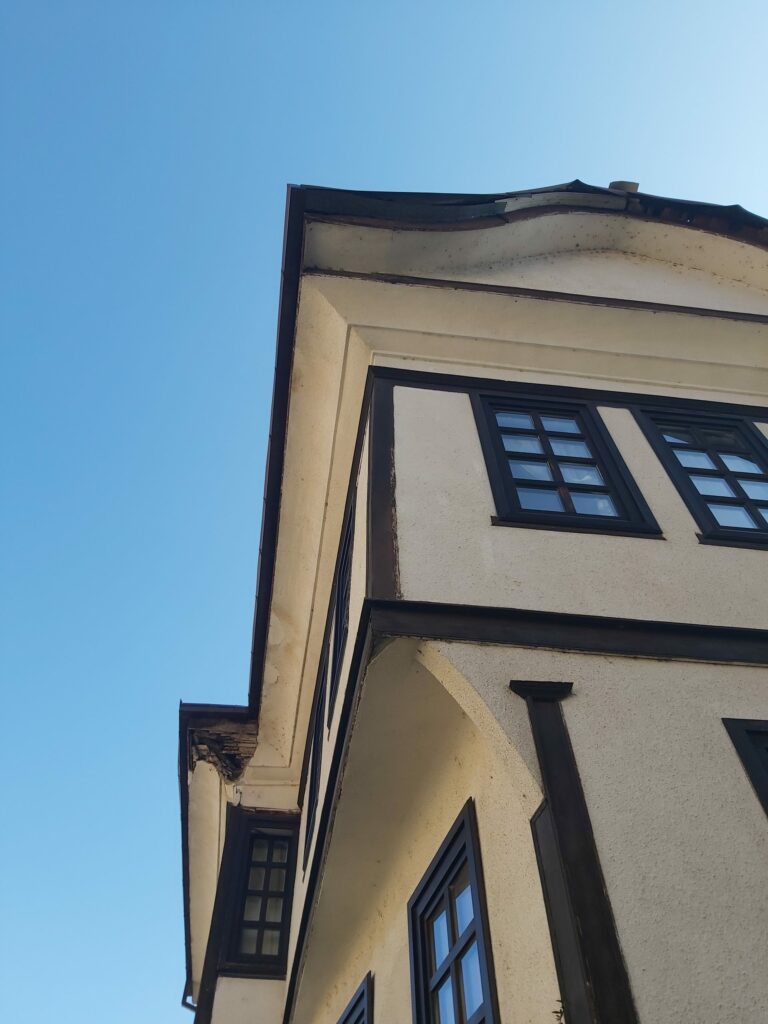
The Ohrid region’s construction relies solely on local natural materials, mainly stone, wood, lime, and clay. Materials were locally processed, yet there is not accurate data where and if the manufacturing facility for processing and burning bricks existed, or where the stone was transformed after quarrying.
In profane architecture in Ohrid, the most widespread materials are stone, wood and plaster. The ground floor is frequently made of stone with wooden bonds, while the upper floors are made in timber framing. The wall on the upper floors is created so that the two sides of wooden beams are forged into thin lines, roughly chopped boards (locally named “placki“), over which plaster is put. In most cases, the plaster is a smooth, elaborated lime with some wood and sticks ingredients. The terracotta is most frequently used for roof covering in the profane architecture.
The massive stone walls are reinforced with wooden bonds, meant to reinforce the masonry to seismic action. Timber elements frame the exterior walls and the windows. Their function is to preserve plaster from decay or damage. Horizontal wooden cornices served for water drainage, to protect the façade.
Windows were relatively big at upper floors (why?), where they opened on the timber framing walls (çatma). Dimension increased with the capacity to afford glass windows. The sliding opening system was widespread (why do you think?).
Match the building materials you see in the photos on the left with their names on the right. Drag the name box and drop it into the corresponding material’s photo. Two building materials have already their names placed upon. You can retry many times to achieve the best score.
Now that you have seen and matched the building materials with their names try to solve the activity below. The material opus cloisonnè is already given.
What materials is your house made of? Cut small pieces of paper and write each piece the materials of your house that you can recall. For example, if you identify 5 building materials, cut 5 pieces of paper and write the material’s name upon each one.
Then, you and your teammates gather all the pieces together. Form teams to facilitate the grouping of the different materials. For example, there will be a team that collects only the pieces of paper that write “wood”, another team those that write “plaster”, another for the word “stone” etc.
Then, please write on the classroom board all the materials written and next to it, the number they appeared at the end of the process. For instance, wood: 15 times, meaning that 15 pieces of paper wrote “wood”.
Reflect on the results with your teammates.
Results